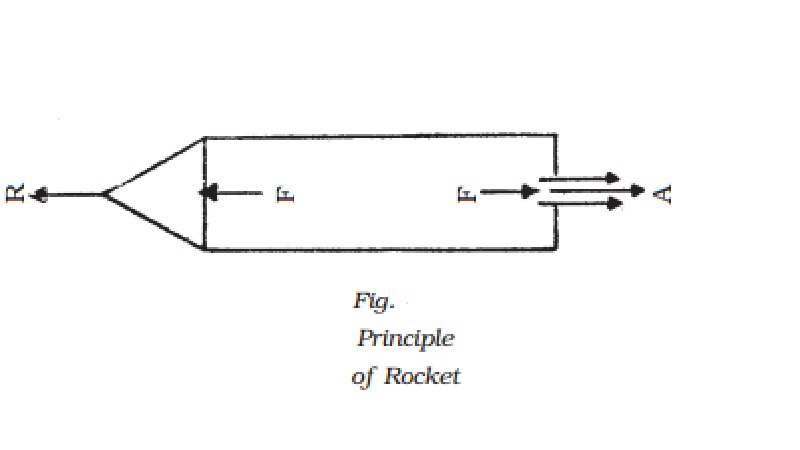Chapter: 11th 12th std standard Class Physics sciense Higher secondary school College Notes
Weightlessness, Rockets - principle and Types of fuels

Weightlessness
Television pictures and
photographs show astronauts and objects floating in satellites orbiting the
Earth. This apparent weightlessness is sometimes explained wrongly as
zero-gravity condition. Then, what should be the reason?
Consider the astronaut standing
on the ground. He exerts a force (his weight) on the ground. At the same time,
the ground exerts an equal and opposite force of reaction on the astronaut. Due
to this force of reaction, he has a feeling of weight.
When the astronaut is in an
orbiting satellite, both the satellite and astronaut have the same acceleration
towards the centre of the Earth. Hence, the astronaut does not exert any force
on the floor of the satellite. So, the floor of the satellite also does not exert
any force of reaction on the astronaut. As there is no reaction, the astronaut
has a feeling of weightlessness.
Rockets - principle
A rocket is a vehicle which
propels itself by ejecting a part of its mass. Rockets are used to carry the
payloads (satellites). We have heard of the PSLV and GSLV rockets. All of them
are based on Newton's third law of motion.

Consider a hollow cylindrical
vessel closed on both ends with a small hole at one end, containing a mixture
of combustible fuels (Fig.). If the fuel is ignited, it is converted into a gas
under high pressure. This high pressure pushes the gas through the hole with an
enormous force. This force represents the action A. Hence an opposite force,
which is the reaction R, will act on the vessel and make it to move forward.
The force (Fm)
on the escaping mass of gases and hence the rocket is proportional to the
product of the mass of the gases discharged per unit time dm/dt and the
velocity with which they are expelled (v)
Fm α dm/dt v
This force is known as momentum
thrust. If the pressure (Pe) of the escaping gases differs from the pressure (Po) in the region outside the
rocket, there is an additional thrust called the velocity thrust (Fv) acts. It is given by Fv = A (Pe − Po)
where A is the area of the nozzle
through which the gases escape. Hence, the total thrust on the rocket is F = Fm + Fv
Types of fuels
The hot gases which are produced by the combustion of a mixture of substances are called propellants. The mixture contains a fuel which burns and an oxidizer which supplies the oxygen necessary for the burning of the fuel. The propellants may be in the form of a solid or liquid.
Related Topics